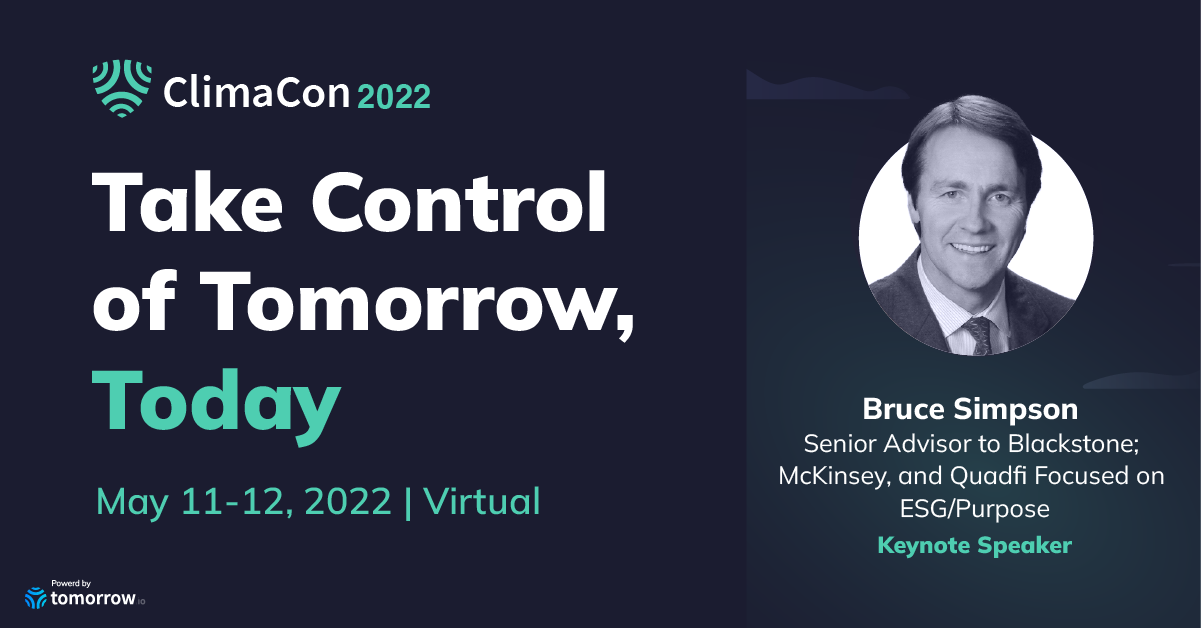Today, we’re honored to announce Bruce Simpson, Senior Advisor to Blackstone and McKinsey & Company on ESG/Purpose, as our latest addition to the ClimaCon 2022 lineup.
We sat down with Bruce to hear about his expert perspective as we gear up for ClimaCon. Here’s what he had to say:
What inspired you to focus on ESG/Purpose consulting, specifically?
My parents are Arctic explorers, so much of my formative childhood was spent kayaking in Greenland/ Arctic Canada, giving me a keen interest in preserving the fragile beauty of the Arctic environment, and the rights of indigenous peoples. I am heavily involved in the NGO space, and have worked a lot with governments, however I thought most impact could come from helping the corporate sector ‘from the inside’, finding ways to shift companies from laggards to leaders on societal impact.
What does “sustainability” mean to you?
Sustainability has a broad definition for me, including environmental stewardship, while also recognizing our social and governance responsibilities to build organizations that deliver positive societal impact from the point of view of a broad base of stakeholders. Sustainability is also a ‘movement’ – it’s about helping individuals understand how their actions can make a difference, and unlock their power to influence corporate actions positively. And it’s about helping companies understand there is no tradeoff between ‘purpose and profit’.
The real tradeoff is between the short term and the long term. In the long term stakeholder interests align- for example increasing front-line pay, or investing to reduce carbon footprint may carry short term costs, however these actions also deliver higher employee engagement, lower attrition, and greater customer loyalty, which deliver shareholder returns longer term. Companies who have a 5-7 year perspective generate higher shareholder returns than companies that think only for the short term.
What’s one thing enterprise organizations who are just launching ESG initiatives need to know?
Focus your first ESG initiatives on tackling your organizations ‘vulnerabilities’. That provides the credibility to then get credit for new ESG strategies building on strengths. For example, IKEA recognized its vulnerability on heavy forest/timber consumption to manufacture its furniture, and launched rental and resale businesses to enable reuse of their products.
One absolute certainty in this space is that as soon as organizations talk externally about their ESG initiatives, critics will calibrate whether they are a ‘smokescreen’ to distract attention from ESG weaknesses. So make sure you identify and tackle weaknesses before outsiders point them out. Finally – the most credible initiatives are often ‘stop do’s’ (e.g. stopping a harmful product). ~40% of customers are boycotting certain products now. Taking a stand which your customers support can increase loyalty. Being seen to be slow to do so can also cost you heavily!















